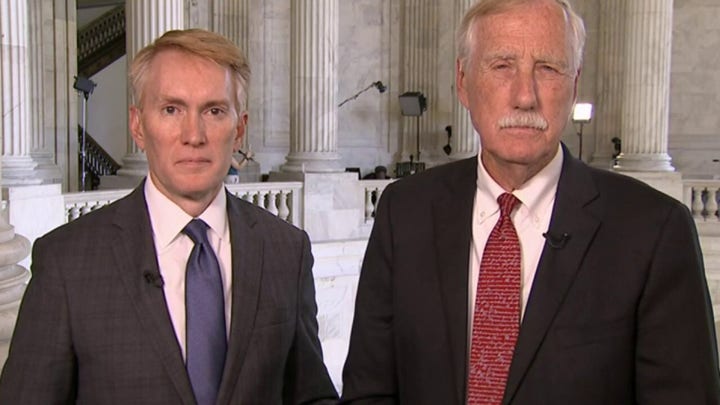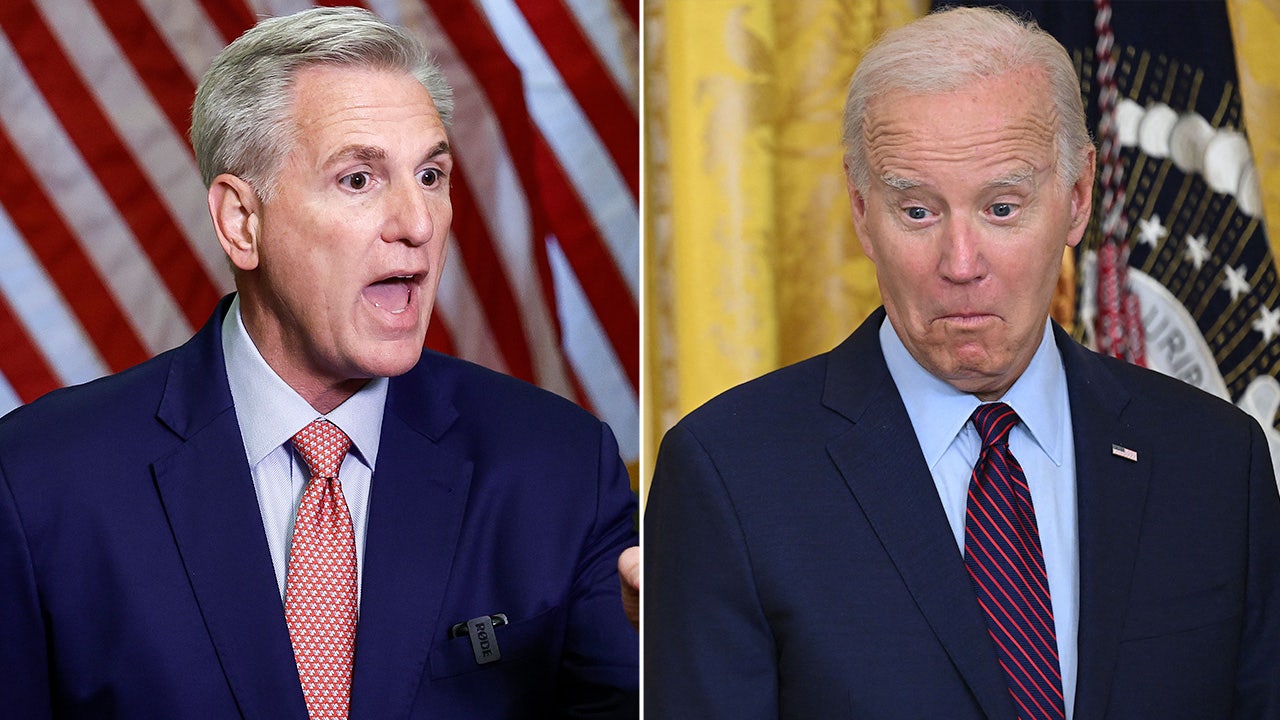With the nation’s capital fixated ontense negotiationsover funding the federal government, apocalyptic warnings over a possible shutdown are filling headlines. Time is “running short,” we’re in “crisis mode,” and the House and Senate are on a “collision course,” to quote just a few prominent news outlets.
But for the 99% of Americans who live far from the swamp, it’s not always clear how a government shutdown would affect day-to-day life. Here are some important points about how shutdowns work – and how Washington makes them worse.
1) Many Federal Functions Continue During Shutdowns
Even if there is a funding lapse, federal activities (and employees) deemed “essential” will continue to draw from the national treasury.Examplesinclude national security, border patrol, law enforcement, disaster response and more.
Speaker Kevin McCarthy and President Biden (Getty)
In addition, funding for many benefits (such as Social Security) along with some agencies (such as the Postal Service) are independent of the annual spending process.
HOUSE LAWMAKERS MOVE TO PROTECT MILITARY PAY FROM LOOMING GOVERNMENT SHUTDOWN
A lapse of under two weeks would have even less effect since federal employees would get their paychecks on time. However, longer shutdowns are typically coupled with providing back pay to bureaucrats and congressional staffers.
Accordingly, the real-world effect of a shutdown would bemuch lessthan the apocalyptic rhetoric that often characterizes press coverage of the issue.
2) Shutdowns Reflect Bloated Government and Failure to Budget
The federal government’s fiscal year begins on Oct. 1 and ends on Sept. 30.
If Congress fails to pass the annual set of spending bills (referred to as appropriations) by the end of September, the government’s ability to spend becomes limited due to important legal safeguards against executive agencies spending without legislative approval.
In theory, the annual budget process looks like this:
By early February, the president delivers a budget proposal to Congress. This provides information and recommendations on the full spectrum of federal activity.By mid-April, Congress produces a budget resolution to establish spending guidelines.Over the late spring and summer, Appropriations Committees draft 12 pieces of legislation to provide spending allowances for federal agencies, with varying degrees of specificity.By Sept. 30, Congress passes the spending bills. Video
Video
Of course, it seldom works that way. Congress hasn’t completed the process on timesince 1997. With Republicans and Democrats divided over the propersize and scopeof the federal government, negotiations over both overall spending levels and item-by-item authorizations usually drag out well past the Sept. 30 deadline.
DITCHING THE CRYSTAL BALL ON A POTENTIAL GOVERNMENT SHUTDOWN
However, the spending process is difficult to complete on time even when one party controls both Congress and the White House. Theunchecked growthof the federal government means legislators haggle over core priorities such as national defense – and special-interest handouts such asmaple syrup subsidies.
Unfortunately, it’s clear that the Biden administration and Senate Majority Leader Chuck Schumer, D-N.Y., haveno interestin making the process go smoother by putting Uncle Sam on a diet.
Senate Majority Leader Chuck Schumer (Chip Somodevilla/Getty Images)
3) Administrations Can Deliberately Make Shutdowns Worse
A classic example of the swamp in action is what’s referred to as “Washington Monument Syndrome,” where a government will make a spending cut or funding lapse as painful as possible by closing down low-cost, highly symbolic things.
The Obama administration implemented this strategy in 2013 by blocking access to open-air public facilities such as theWorld War II Memorial, even though keeping such areas closed and guarded was more expensive than normal operations.
While there’s no indication as to how Biden plans to handle a potential government shutdown, the administration’sradical approachto issue after issue doesn’t bode well.
CLICK HERE FOR MORE FOX NEWS OPINION
4) Reducing the Impact of Shutdowns – and Reducing Deficits
Many things the federal government manages are important and necessary. However, some of these (such as theair traffic controlsystem andinfrastructureprograms) can and should be devolved to state and local governments, civil society andprivate entities.
Shrinking the endless list of federal responsibilities would make the country less vulnerable to congressional dysfunction. (If polls are any indication, the American public considers Congress to beplenty dysfunctional.)
Also, in most cases, pulling these activities from the swamp would yield budgetary savings. With the national debt at$33.1 trilliondue in large part torampant waste and fraud, unloading federal liabilities is long overdue.
House Republicans have put forwardspending billsand abudget resolutionthat would move things in the right direction, and there is debate within the GOP caucus over whether to make the legislation even stronger.
Following a wildly destructive spending spree that has pushed the country down the road tobankruptcyand hyper-inflation, that’s a debate worth having.

 Video
Video Video
Video Video
Video
